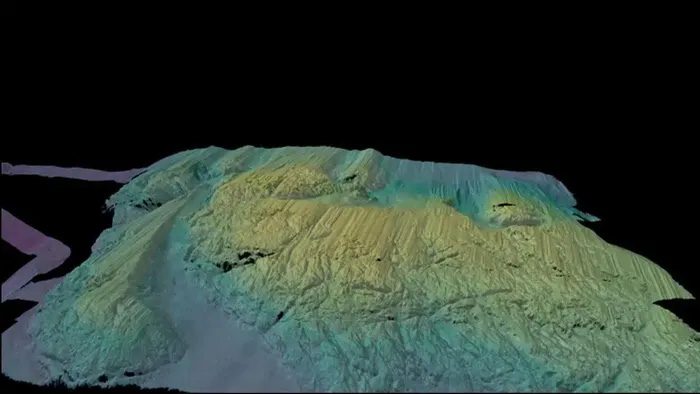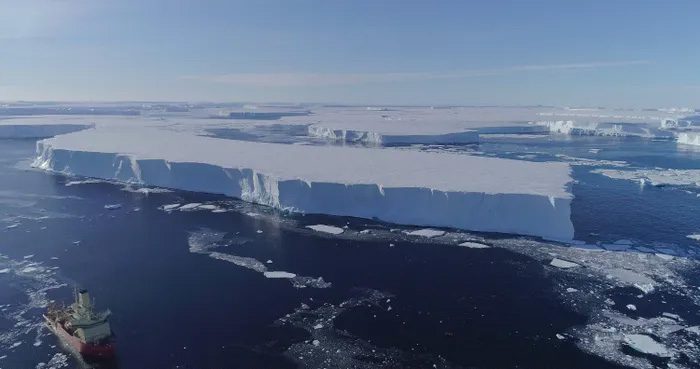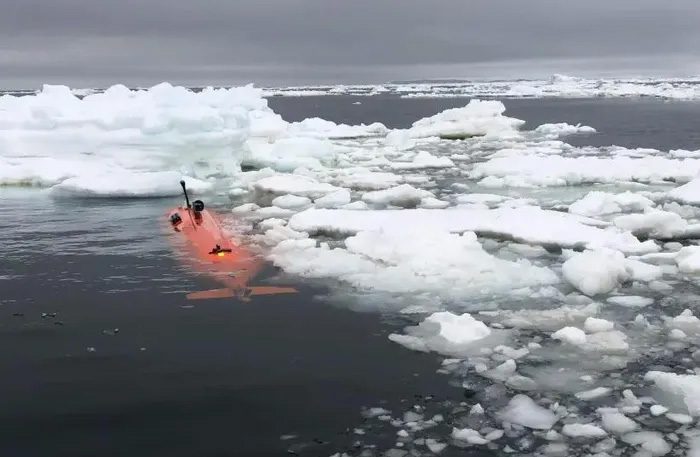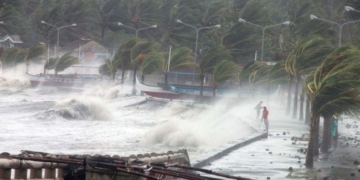Warm water is impacting all sides of the Thwaites Glacier, making the scenario of the entire ice shelf breaking off and subsequently flowing into the ocean not far off.
The Thwaites Glacier in Antarctica is dubbed the “doomsday glacier” due to its high risk of collapse and threat to global sea levels. It contains enough water to raise sea levels by 3 meters.
Scientists have indicated that the area of this glacier will shrink rapidly in the coming years. This raises significant concerns regarding extreme sea-level rise, alongside the potential collapse of the glacier, according to CNN.
The underwater edge of the glacier is being eroded due to the warming of the Earth. In a study published on September 5 in the journal Nature Geoscience, scientists mapped the glacier’s shrinkage, hoping to understand its future state.
The research indicates that at some point in the last two centuries, the glacier’s base has been dislodged from the seabed and eroded at a rate of 2.1 kilometers per year. This figure is double what scientists have observed previously.

3D rendering of the Thwaites Glacier’s base. (Photo: University of South Florida).
Massive Impact
“This rapid melting could occur as soon as the mid-20th century,” said Alastair Graham, the lead author of the study and a marine geophysicist at the University of South Florida, in a press release.
Parameters indicate that Thwaites is likely to undergo rapid melting in the near future, especially as it detaches from an underwater mountain ridge that is currently helping to stabilize the glacier’s base.
“Thwaites has really been holding on. We will see significant changes over a short period, even measured in years, once the glacier’s base separates from the ridge,” stated Robert Larter, a marine geophysicist and co-author of the study from the British Antarctic Survey.
The Thwaites Glacier, located in West Antarctica, is one of the largest glaciers on Earth, larger than the state of Florida. According to NASA, this glacier is part of the West Antarctic Ice Sheet. This area contains enough ice to raise sea levels by up to 5 meters.

Research vessel from the U.S. Antarctic Program near the Thwaites Glacier. (Photo: CNN).
As the climate crisis accelerates, this area has been closely monitored due to its rapidly melting ice and the potential for widespread coastal destruction.
For decades, the Thwaites Glacier has raised concerns among scientists. As early as 1973, researchers questioned whether it was at high risk of collapse.
Nearly a decade later, scientists discovered that the glacier was connected to the seabed rather than land above. This allows warm ocean currents to melt the ice from below, destabilizing it.
As a result of this research, scientists began referring to the area surrounding Thwaites as the “vulnerable part of the West Antarctic Ice Sheet.”
Melting Faster Than Predicted
In the 21st century, scientists began documenting the rapid melting of the Thwaites Glacier with a series of alarming studies.
In 2001, satellite data showed that the glacier’s grounding line had retreated by about 1 kilometer per year. By 2020, scientists found evidence of warm water flowing beneath the glacier, melting it from below.
Then in 2021, a study indicated that the Thwaites ice shelf could collapse within the next 5 years. The ice shelf helps stabilize the glacier and prevents ice from flowing freely into the ocean.
“From satellite data, we see large cracks spreading across the surface of the ice shelf, weakening the structure of the ice. It’s like a crack in a windshield,” said Peter Davis, a marine scientist from the British Antarctic Survey, to CNN in 2021.
Findings from September 5 indicate that Thwaites could be melting at a much faster rate than previously thought.

Autonomous underwater vehicle near the Thwaites Glacier after 20 hours of mapping the seabed. (Photo: University of Gothenburg).
The research press release stated that scientists collected data during a 20-hour mission under harsh weather conditions. The mapped underwater area is equivalent in size to the city of Houston.
“This study is truly a once-in-a-lifetime mission,” Graham remarked.
The research team hopes to return soon to collect samples from the seabed to determine when previous melting events occurred. This could help scientists predict future changes in the “doomsday glacier.”
Previously, scientists believed that the Thwaites Glacier would change very slowly, but Graham asserted that this research will challenge those views.
“Even a small impact on Thwaites could lead to significant consequences,” he said.
The Thwaites Glacier is one of the fastest-melting glaciers in Antarctica. Since the 1980s, the glacier has lost about 595 billion tons of ice. The collapse of the Thwaites Glacier could cause the rest of the West Antarctic Ice Sheet to flow into the ocean.


















































